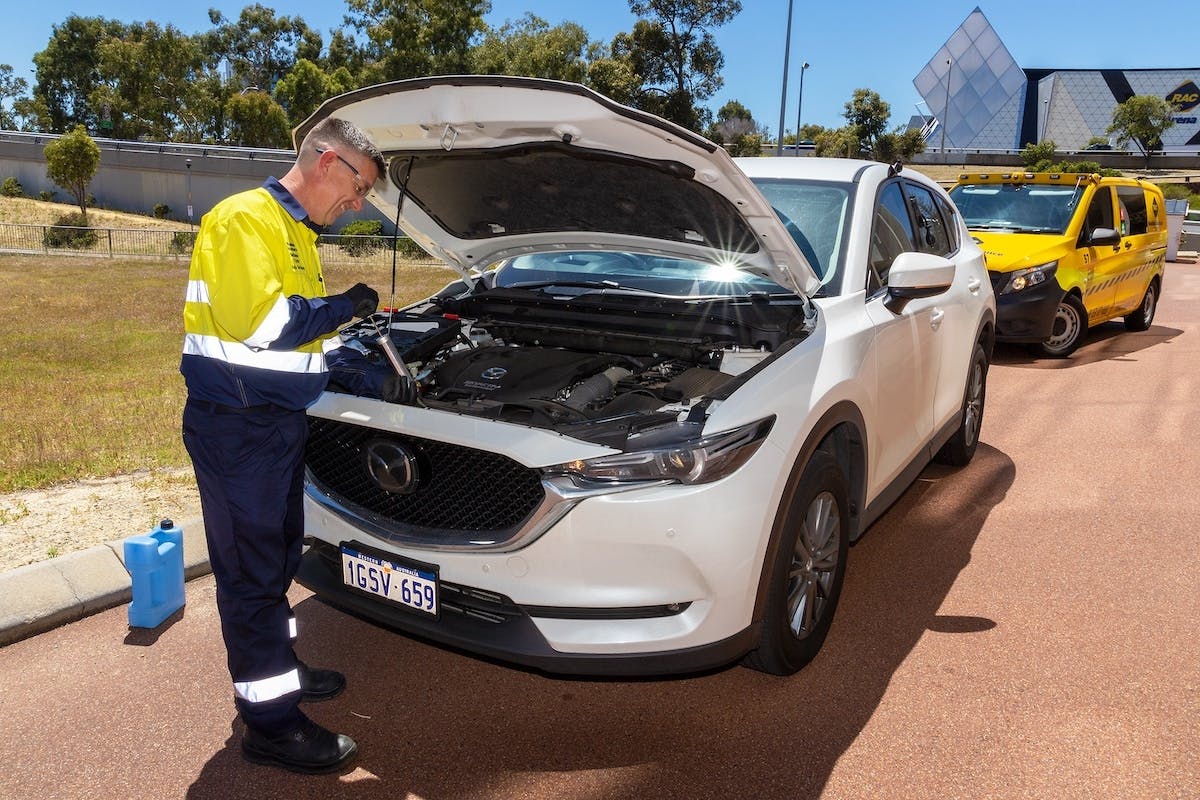What To Do If Your Car Breaks Down Unexpectedly, And What Signs To Look For To Prevent It

There are few things more annoying (and stressful) on this earth than having your car breakdown on the side of the road. Fortunately not only does it not have to be the worst thing in the world, there are also a number of things you can do to lessen the chances of a roadside breakdown.
We’ve teamed up with RAC to help outline a few obvious signs of car trouble you can look out for yourself, and what to do if you breakdown while driving. Read on below to find out more, and sign up to RAC Roadside Assistance from as little as $10 per month and gain access to WA’s largest roadside assistance network.
SIGNS OF CAR TROUBLE
Slow acceleration
No one knows your car like you do, and if it starts to become sluggish while accelerating that’s one very obvious sign that something’s up. The reasons for this are also pretty varied, including dirty air cleaners, clogged fuel injectors, flat tyres, general wear and tear and more.
Noisy brakes
One of the most important parts of your car to be functioning properly, we nevertheless tend to forget about them until they start making some weird noises or not feeling right underfoot. Issues range from pads being worn out, defective rotor/drum surfaces and more – get them sorted with a mechanic to prevent further (costly) damage to other parts of your car.
Exhaust issues
It goes without saying, but if your exhaust is smoking or you can smell exhaust fumes in the car – you need to get it seen to ASAP. In modern diesel vehicles it may be due to faulty injectors, poor fuel combustion, faulty exhaust system or something else. Meanwhile black smoke in petrol cars could be anything from too much fuel going into the engine (poor tuning) to a faulty electronic sensor.
Uncharacteristic noises
A little bit of rattling and rolling in your car may not be unusual, but if you’re hearing new knocks, thumps or whines there could be something more serious at play. Once again the causes are varied, including poor tuning, low fuel octane, power-steering pumps, hard fuel lines, universal joints…. The list goes on and is best served with a diagnostic check and repair. RAC Members can get access to a free 30-minute diagnostic check.
Starting problems
Turning the key over only to have nothing happen is a deflating feeling, though with any luck it’s just a flat battery issue. You can usually tell by the lights on your dashboard – if they’re weak you’ll need a jumpstart and/or new battery. From there it’s a myriad of issues best solved by a trained mechanic, and you can save yourself the trouble of moving your car to them by looking into RAC’s Mobile Service options, including a Battery Service.
Bad vibrations
If your car is giving you some bad vibrations it can be down to a variety of issues with components like your wheels, brakes, axles, engine, tyre pressure, driveshafts and more. If you’re still able to drive the car then getting it safely to a mechanic for a service is your best bet to get the issue diagnosed.
Engine check light
If you’re driving around the dreaded check engine light is coming on it’s important to take it very seriously. Reasons for it coming on range from a loose fuel cap to ignition coils and spark plugs needing replacing. With engine check lights it’s always safest to park your car up (at home or the mechanic) and let an expert diagnose the problem – you can call Roadside Assistance on 13 11 11.

WHAT TO DO IN A BREAKDOWN
So you’ve done your best with the warning signs above, and your little car that could – for whatever reason – just couldn’t today. It’s important once you have broken down to follow a safe series of steps to ensure you and other cars around you aren’t involved in any accidents by following these steps:
1. Pullover
Find a safe space to pull over off the road or in the emergency breakdown lane (avoid median strips where possible) – essentially you want to put as much distance as possible between your car and traffic.
Subscribe to our free newsletter!
2. Turn on hazard lights
The big red triangle will be somewhere around your centre console or dashboard, make sure it’s on straight away, along with your parking lights.
3. Exit the vehicle
If it’s safe to do so, hop out of your car on the side away from traffic and close the door behind you. Make sure you stand clear of the road, away from traffic and if it’s hot, under some shade. If it’s not safe make sure to stay in the car with your seatbelt on.
4. Call for help
If you’re with RAC Roadside Assistance give them a call straight away (13 11 11), otherwise a tow company or other mobile mechanics. If you’re outside the car make sure to keep your eye on traffic while you’re doing so.
5. Stay calm and wait it out
As long as you’ve put yourself in a safe position it’s important to stay in that area and wait for help to arrive.
If you’re looking for some peace of mind while on the road, check out RAC’s four different roadside assistance cover options today.